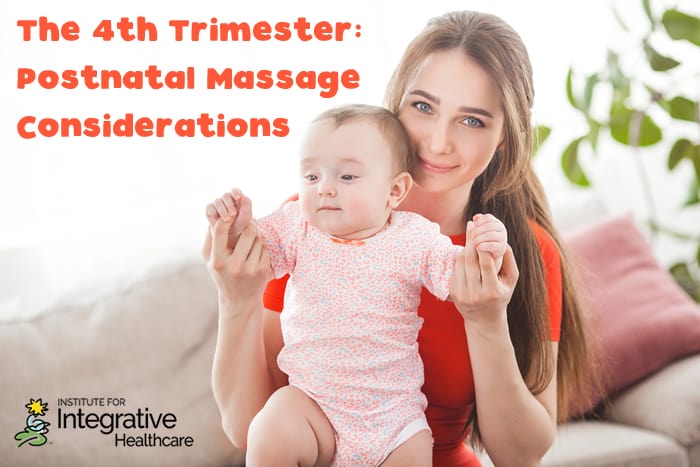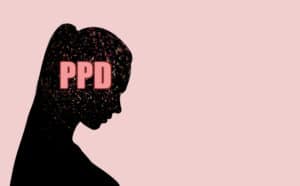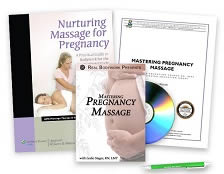

Postnatal massage entails massage efforts for a woman after carrying a fetus to its eventual end result, which means:
- successful delivery
- unsuccessful delivery or
- spontaneous miscarriage before delivery date
After any of these end results, a women’s body begins its recovery process. This can take several weeks to months depending on the patient.
Postnatal massage is offered to women after giving birth. The prior nine-month (or less) time period brought about conditions and factors exhausting to the woman’s body. Massages can restore ease and comfort. Relaxation is a therapeutic benefit of massage and can be a main focus of postnatal massage. Supporting the physical, emotional, mental and spiritual well-being of the mother can be goals of postnatal massage sessions.
I have worked with some women merely one-week post pregnancy, whereas other women may need several weeks or months before receiving bodywork efforts. There are a few indicators when a woman is ready to receive massage:
- The potential for blood clots has passed,
- skin and muscle integrity have returned to healthy states, and
- she is able to perform basic life tasks and chores with only mild discomfort.
A doctor’s note is required if I work on any postnatal client prior to six weeks post-delivery.
Benefits of Postnatal Massage
There are many significant goals and benefits of postnatal massage. Amongst the top reported by my clientele include:
- improved sleep
- rapid reduction in swelling
- better feeding of baby
- alleviated symptoms of anxiety and postpartum depression
- and relief of pain
Because of the chronic strain placed upon physical tissues over a nine-month span, a postnatal massage may seem like a typical injury recovery session.
Cautions and Contraindications
There are cautions and contraindications to consider before providing postnatal massage sessions. First, ask if the mother was considered “high risk” during her pregnancy.
Factors that would fall under this category, as defined by the American Pregnancy Association, include: (1)
- Maternal age under 20 and over 35
- Previous challenges with pregnancy
- If having multiple childbirth experience (twins, triplets, etc.)
- Asthma or other respiratory challenge
- Cardiovascular disease
- Liver, Kidney, Bladder disease
- Diabetes Mellitus or if Gestational Diabetes develops
- If mother is Rh-Negative
Other factors to consider for cautions and contraindications include unmanaged high blood pressure, potential for blood clotting (due to hormonal fluctuations) and deep vein thrombosis (DVT). These challenges may present as edema and varicosities. Physical challenges to be aware of include skin conditions, hernias, slow rate of abdominal healing, ligament laxity, and nerve damage. Additionally, Postpartum Preeclampsia may occur in some, usually within 48 hours post-delivery, although there have been cases extending 6-8 weeks post-delivery. (2)
Descriptions of Vaginal and Cesarian Births
There are two ways a baby is delivered by the mother. Understanding the possible injuries with each childbirth form will help a massage therapist understand their client’s symptoms.
Vaginal Childbirth
A vaginal childbirth occurs as the baby exits the vaginal canal. The cervix (which is the portion of the uterus that naturally projects into the vaginal canal) must dilate to 10 cm (4 inches) to allow this birth to take place reasonably well.
Possible Injuries
Possible injuries to the mother include stretching of pelvic floor muscles, scarring due to episiotomy, compression of nearby nerves, compression of the bladder and/or rectum, and damage to internal pelvic floor fascia. All these injuries may take years to heal without physical efforts to strengthen muscles within the region. (3)
Two basic types of episiotomies (4)
- Midline approach (preferred in U.S. and Canada): incision runs the length of the perineum
- Mediolateral approach (preferred elsewhere): incision runs at a 45o from vagina to gluteals
Degrees of Tears
1o – Small tear only through vaginal lining
2o – Tear extends through vaginal tissue
3o – Tear involves vagina and anal sphincter
4o – Tear involves vagina, anus and rectum
A Cesarian (C-section) birth involves creating incisions within the lower abdomen and uterus. There are many reasons why this method is chosen. Challenges with the umbilical cord or placenta, obstructions created by masses within the uterus or vagina, carrying multiple babies, positioning of the baby, labor is distressed, or the health of the mother is in question (heart, brain, lung or condition or acute case of genital herpes). A woman who has previously delivered by C-section may likely deliver in this method again, especially if the prior uterine incision created a great deal of scar tissue to restrict the pelvic floor.
There are four potential incisions made for a Cesarian:
- A midline vertical incision runs along the mid-sagittal plane and extends from the lower border of the umbilicus to the inguinal line above the pubis.
- A Maylard incision involves a curved incision stretching across the anterior superior iliac spines (hip bones).
- A Joel-Cohen incision is a small horizontal cut approximately 3-4 inches above the pubis.
- A Pfannestiel incision, also called a “bikini cut,”is a horizontal incision directly above the pubic bone. The final incision mentioned is often requested to hide scarring while wearing normal clothing.
Possible Injuries
Possible injuries include scarring, restrictions of range of motion, altered digestion, altered hormones and period cycles. There is an increased chance of blood clotting, complications with anesthesia, respiratory distress, and potential lacerations of the fetus. Restrictions due to scar tissue development can be witnessed when the woman exhibits a gait more narrow than usual. (5)
Pelvic Floor Disorders
Our massage therapy efforts need to support the recovery process and encourage restoration of healthy body function. Amongst the physical challenges affecting the new mother, pelvic floor disorders deserve a special mention. For women experiencing these disorders, a combination of physical therapy and massage therapy will be beneficial to restoring pelvic floor health.
Pelvic floor disorders can be common to postnatal clients. The weakening of the pelvic floor structures may create malfunction of the rectum, sigmoid colon and bladder. A patient may choose many options to assist in their recovery from these disorders.
Surgeries to place mesh or slings to support organs or to reconstruct tissues are available. Dextrose or PRP injections can aid natural healing of pelvic floor tissues. A vaginal pessary, a plastic device, may be inserted to provide additional support for organs. Biofeedback to either relax or stimulate pelvic floor muscles may be provided. Many physical therapists have earned additional training to support patients with these conditions.
A massage therapist needs to ask their postnatal patients if they are undergoing any of the aforementioned treatments for pelvic floor disorders. As these become more prevalent, massage efforts to augment these treatments can be of great assistance.
Other physical challenges to which to be mindful include sciatica conditions, persistent back and hip pain, excessive muscle soreness, engorged mammary tissue, skin conditions, stretch marks, abdominal distention, and swollen feet and legs. Treatment planning for postnatal patients will likely include many of these additional challenges. Myofascial Release and Lymphatic Drainage techniques may aid these patients. Ensure you conduct a thorough intake before utilizing any specific massage modality. (6)
Postpartum Depression

With postnatal clients, it is prudent to be aware of Postpartum Depression (PPD). This condition extends beyond expected feelings of fatigue commonly witnessed postpartum. Beyond fatigue, PPD features depression, hopelessness, feeling detached from one’s child and family, feeling alone or “not good enough” as a mother. Shame or guilt may accompany their feelings. PPD is a serious mental health condition that demands medical attention. Postpartum Psychosis is an extreme form of this condition.
One in 9 women report PPD annually, according to the American Psychiatric Association. Hormonal changes postpartum do not re-regulate equally for everyone. Some women’s bodies need several months for estrogens and progesterone to harmonize. Physical tissues may need a year or more to recover to a significant extent.
Factors that amplify PPD risk include:
• personal or family history of depression or bipolar disorder
• lack of support from family, friends or spouse
• having a baby with special needs
• challenges with drugs or alcohol
• experiencing relationship and/or financial trouble
• difficulty breastfeeding
• and if the pregnancy was unplanned (7)
A massage therapist should encourage a mother to contact their doctor, nurse or midwife if PPD presents, if she (nor anyone in the home) can care for the baby, if working around the house is too demanding, have thoughts of hurting themselves or the baby and/or symptoms intensify.
There are many therapies such as psychotherapy and working with social workers and counselors to aid women with PPD. Medications such as antidepressants and benzodiazepines are often provided to ease symptoms of anxiety and depression. Developing a network of supportive people will help curtail the onset of postpartum depression. Finding a trusted professional therapist and/or organization that specializes in postpartum care and challenges will offer much needed guidance to avoid physical, mental, and emotional challenges.
Be Aware
As massage therapists work with postnatal patients, remaining aware and supportive of efforts to aid a client’s physical, mental, emotional and spiritual health aspects will be vital. Hold professional space for continual changes in these aspects. Communicate thoroughly about the holistic nature of the impact these aspects within the patient. Be ready to offer resources for assistance. Recognize through touch how their body responds to massage application, especially changes in reception over time.














